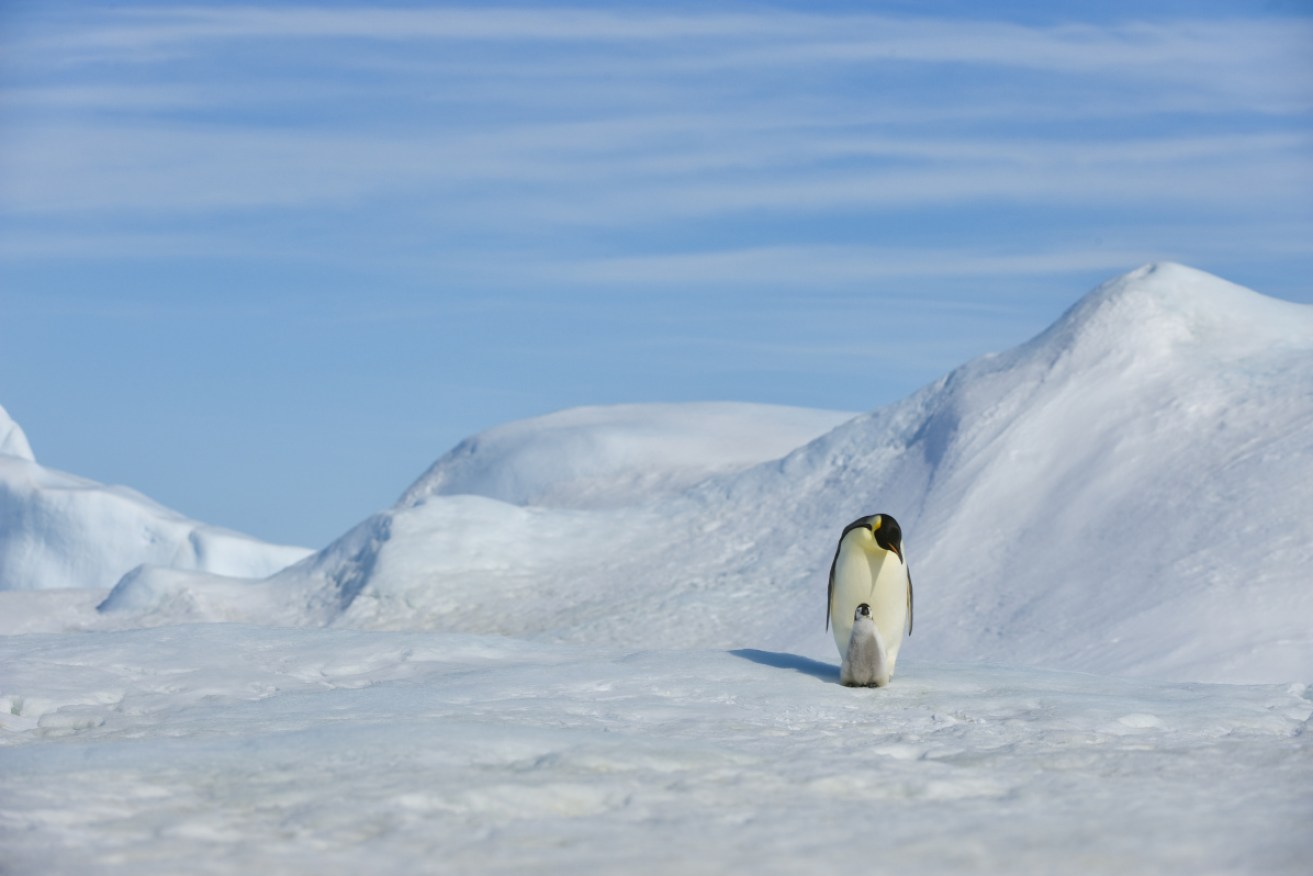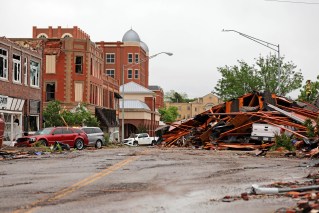An emperor penguin colony in Antarctica has simply vanished

Antartica's second largest emperor penguin population has not recovered from the loss of 10,000 chicks. Photo: Getty
The Antarctic’s second-largest colony of emperor penguins collapsed in 2016, with more than 10,000 chicks lost, and the population has not recovered, according to a new study.
Many of the adults relocated nearby, satellite imagery shows, but the fact that emperor penguins are vulnerable in what had been considered the safest part of their range raises serious long-term concerns, said Phil Trathan, the paper’s co-author and head of conservation biology with the British Antarctic Survey in Cambridge, England.
“That means that these places aren’t as safe as we thought previously,” Dr Trathan said.
The colony at Halley Bay has all but disappeared, the research team at the British Antarctic Survey said in a statement.

Satellite photos shows the site of the Dawson Lambton emperor penguin colony in 2016 and 2018. Photo: AAP
Emperor penguins — the world’s largest — breed and moult on sea ice, chunks of frozen seawater. Awkward on land, they cannot climb icy cliffs and so are vulnerable to warming weather and high winds whipping across the ice. Under the influence of the strongest El Niño in 60 years, September 2015 was a particularly stormy month in the area of Halley Bay, with heavy winds and record-low sea ice.
The penguins generally stayed there from April until December when their chicks fledged or had grown their feathers, but the storm occurred before the chicks were old enough.

The Dawson Lambton emperor penguin colony has not rebounded from a chick loss in 2016. Photo: Getty
Those conditions, Dr Trathan said, appeared to have led to the loss of about 14,500 to 25,000 eggs or chicks that first year and the colony has not rebounded. The study called the three-year decline unprecedented, “three years of almost total breeding failure.”
Still, the population in Halley Bay represents only about 8 per cent of the world’s population of emperor penguins, Dr Trathan said, so the loss does not pose a threat to the future of the species. Roughly 130,000 to 250,000 breeding pairs of emperor penguins live in 54 colonies worldwide, he said.
British researchers have been studying penguins in the area since 1956 and had never seen a decline of this magnitude, he said.
Other scientists have projected drastic declines in emperor penguin populations by the end of the century, because of climate change.
Stephanie Jenouvrier, an associate researcher at the Woods Hole Oceanographic Institution in Massachusetts, has predicted a 30 per cent worldwide drop in coming decades. Her model did not include significant events like the 2015 stormy season, which will most likely make the situation worse, she said.

Scientists are concerned about the rapid decline of the Halley Bay population. Photo: Getty
Several researchers said they were encouraged by satellite evidence suggesting that many of the animals were able to relocate to a colony called Dawson-Lambton, about 56 kilometres to the south, which has seen a more than tenfold increase in penguins in the past few years.
“It is a very huge movement and a huge number of birds that were able to move between two colonies after an extreme event,” Ms Jenouvrier said.
“I think this is very cool to be able to show that.”
Heather Lynch, an associate professor of ecology and evolution at Stony Brook University in New York, viewed that relocation as “extremely hopeful,” a sign that the animals would be able to adapt to climate change, at least in the short term.
In past models, she said, researchers often assumed the penguins would not find another home.
“My hope is that there are refuges that they can move to for at least some period of time and that might buffer some of the most dramatic effects of climate change,” Professor Lynch said.
The new study also shows the power of satellite data to track species in the most inaccessible parts of the globe.
“At least we have a means to keep an eye on these birds from the world’s more remote places,” she said.
Still, the Halley Bay decline in population is troublesome because the drop-off was rapid, rather than a gradual decrease in the face of climate change.
“You don’t know how close to the cliff you are until it’s too late,” Professor Lynch said, “and you can’t assume you’ll be able to walk back from the cliff when you get there.”
-New York Times








